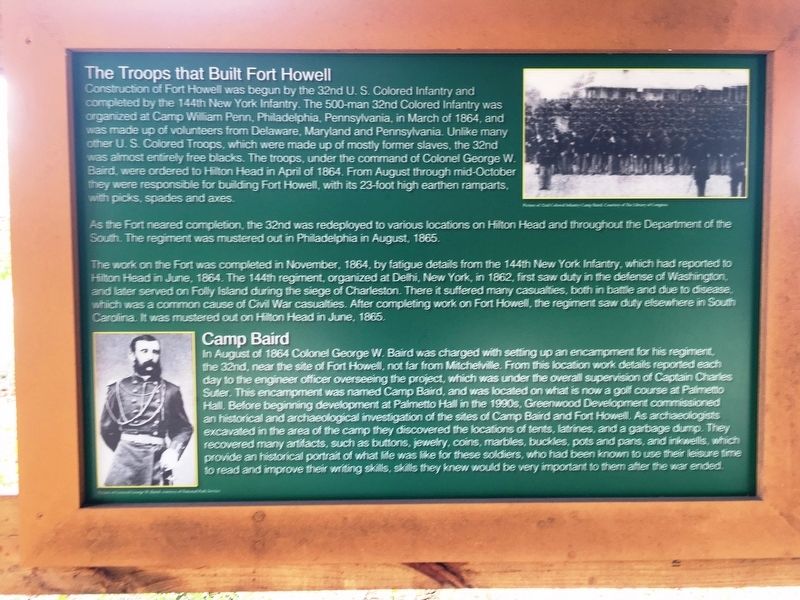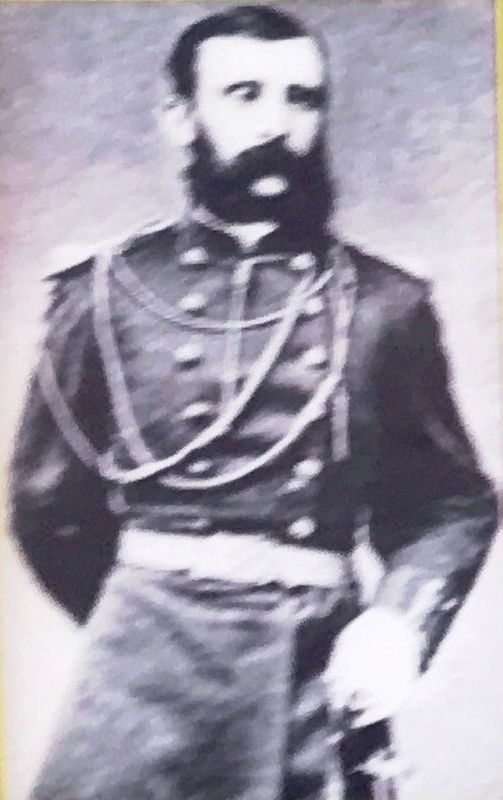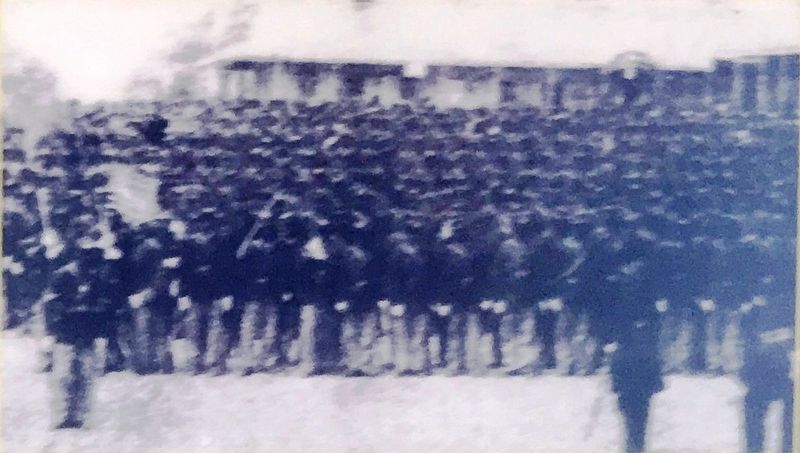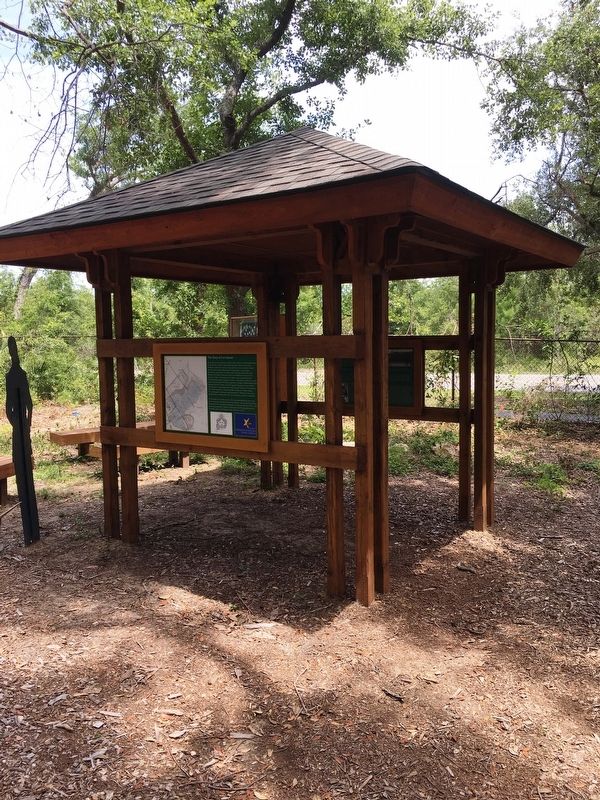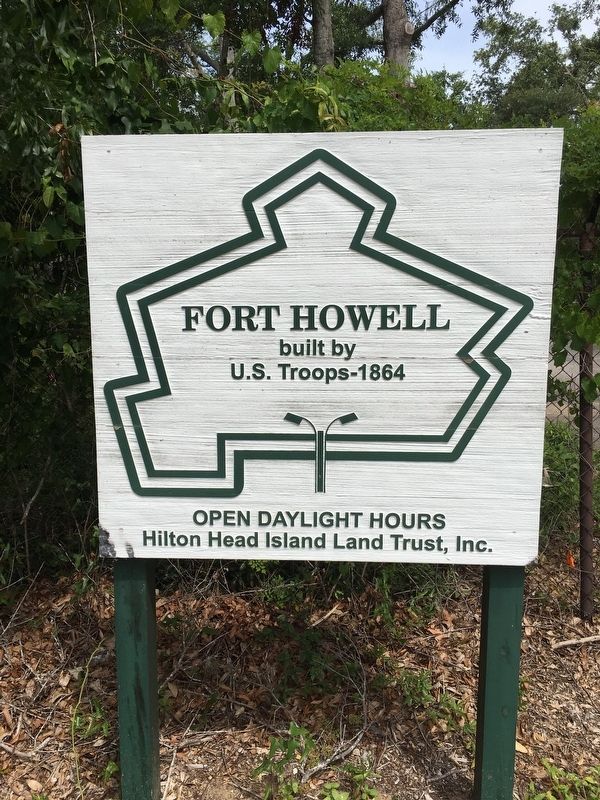Hilton Head Island in Beaufort County, South Carolina — The American South (South Atlantic)
The Troops that Built Fort Howell / Camp Baird
Inscription.
The Troops that Built Fort Howell
Construction of Fort Howell was begun by the 32nd U.S. Colored Infantry and completed by the 144th New York Infantry. The 500-man 32nd Colored Infantry was organized at Camp William Penn, Philadelphia, Pennsylvania, in March, 1864, and was made up of volunteers from Delaware, Maryland, and Pennsylvania. Unlike many other U.S. Colored Troops, which were made up of mostly former slaves, the 32nd was almost entirely free blacks. The troops, under the command of Colonel George W. Baird, were ordered to Hilton Head in 1864. From August to mid-October they were responsible for building Fort Howell, with its 23- foot high earthen ramparts with picks, spades and axes.
As the Fort neared completion, the 32nd was redeployed to various locations on Hilton Head and throughout the Department of the South. The regiment was mustered out in Philadelphia in August, 1865.
The work on the Fort was completed in November, 1864, by fatigue details from the 144th New York Infantry, which had reported to Hilton Head in June, 1864. The 144th regiment, organized in Delhi, New York, in 1862, first saw duty in the defense of Washington, and later served on Folly Island during the siege of Charleston. There it suffered many casualties, both in battle and due to disease, which was a common cause of casualties. After completed work on Fort Howell, the regiment saw duty elsewhere in South Carolina. It was mustered out on Hilton Head in June, 1865.
Camp Baird
In August, 1864, Colonel George W. Baird was charged with setting up an encampment for his regiment, the 32nd near the site of Fort Howell, not far from Mitchelville. From this location work details reported each day to the engineer officer overseeing the project, which was under the overall supervision of Captain Charles Suter. This encampment was named Camp Baird and was located on what is now a golf course at Palmetto Hall. Before beginning development at Palmetto Hall in the 1990s, Greenwood Development commissioned an historical and archaeological investigation of the sites of Camp Baird and Fort Howell. As archaeologists excavated in the area of the camp they discovered the locations of tents, latrines and a garbage dump. They recovered many artifacts, such as buttons, jewelry, coin, marbles, buckles, pots and pans and inkwells, which provide an historic portrait of what life was like for these soldiers, who had been known to use their leisure time to read and improve their writing skills, skills they knew would be very important to them after the war ended.
Erected by Hilton Head Island Land Trust.
Topics. This historical marker is listed in these topic lists: African Americans • Forts and Castles • War, US Civil. A significant historical month for this entry is August 1864.
Location. 32° 13.964′ N, 80° 41.643′ W. Marker is on Hilton Head Island, South Carolina, in Beaufort County. Marker can be reached from Beach City Road, 0.2 miles south of Dillon Road, on the right when traveling south. Marker located inside Fort Howell Historic Park. Touch for map. Marker is at or near this postal address: 160 Beach City Rd, Hilton Head Island SC 29926, United States of America. Touch for directions.
Other nearby markers. At least 8 other markers are within walking distance of this marker. General Howell / Captain Suter (here, next to this marker); Forts of the Civil War Era (here, next to this marker); The Story of Fort Howell (a few steps from this marker); Fort Howell - 1864 (approx. 0.2 miles away); Fort Howell (approx. 0.2 miles away); Mitchelville Site (approx. 0.2 miles away); St. James Baptist Church (approx. 0.2 miles away); Cherry Hill School (approx. 0.2 miles away). Touch for a list and map of all markers in Hilton Head Island.
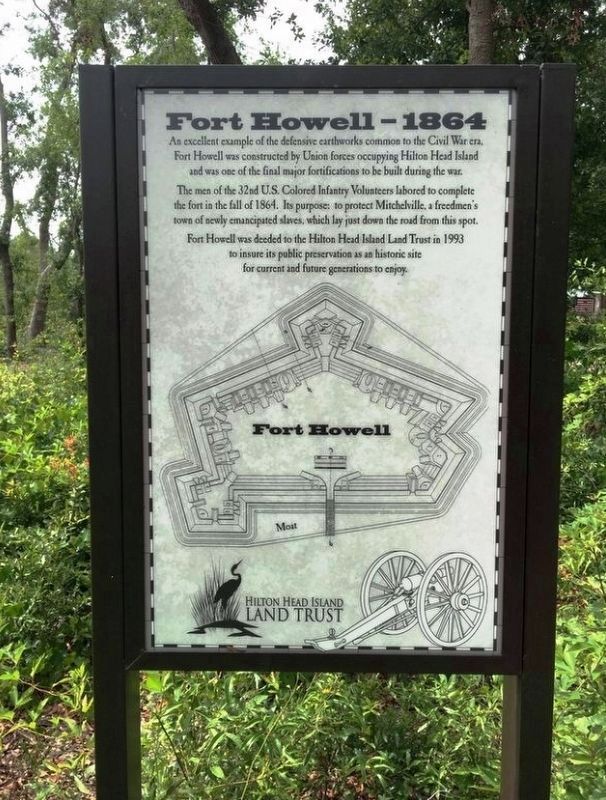
Photographed By Brandon D Cross
6. Fort Howell – 1864
An excellent example of the defensive earthworks common to the Civil War era. Fort Howell was constructed by Union forces occupying Hilton Head Island and was one of the final major fortifications to be built during the war.
The men of the 32nd U.S. Colored Infantry Volunteers labored to complete the fort in the fall of 1864. Its purpose: to protect Mitchelville, a freedmen’s town of newly emancipated slaves, which lay just down the road from this spot.
Fort Howell was deeded to the Hilton Head Island Land Trust in 1993 to insure its public preservation as an historic site for current and future generations to enjoy.
Credits. This page was last revised on October 18, 2020. It was originally submitted on April 7, 2019, by Brandon D Cross of Flagler Beach, Florida. This page has been viewed 391 times since then and 39 times this year. Photos: 1, 2, 3, 4, 5, 6. submitted on April 7, 2019, by Brandon D Cross of Flagler Beach, Florida. • Bernard Fisher was the editor who published this page.
